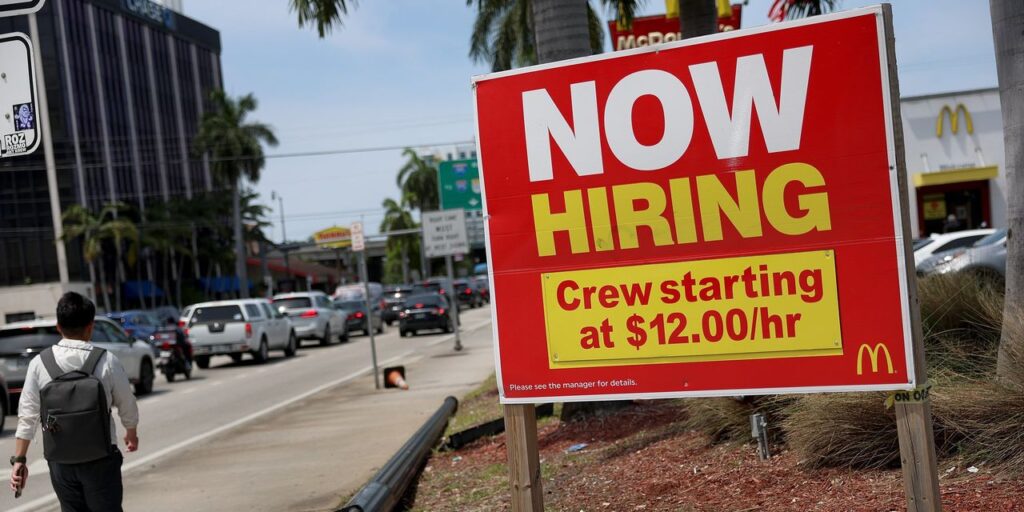Hiring tapered off a bit in May and inflation increased at a slower pace, a Federal Reserve survey found, but the U.S. economy expanded again and suggested growth is unlikely to slow enough to ease stubbornly high price pressures.
The Fed’s regular survey of the economy, known as the Beige Book, indicated the U.S. is still in decent shape.
Yet persistently high inflation remains a big problem for a Fed bent on eradicating price pressures. The central bank might have to raise interest rates again this year, economists say, to fully get inflation under control.
The report covers the six weeks leading up to May 22. It was prepared ahead of the Fed’s next meeting on June 13-14. Here are the highlights of the report:
The economy
The U.S. appears to be expanding in the 1% to 2% range. Not great, but steady as she goes.
Four of the Fed’s 12 regional banks covering the U.S. posted small increases in economic growth. Six reported no change. And two said activity declined slightly.
Consumer spending
Americans are still spending lots of money, and not just because of high inflation. People spent more at restaurants, hotels and travel-related businesses.
That’s not a sign of an economy getting weaker. Spending on leisure and hospitality typically is the first to go when Americans tighten their belts.
Inflation
The increase in prices slowed a bit in the spring. In several parts of the country, consumers appeared to balk at higher prices.
Yet strong demand has resulted in companies keeping prices high, other Fed banks reported.
Inflation is likely to remain close to current levels in the next few months. The rate of yearly inflation stood at 4.9% in April and has barely changed this year.
Labor market
Companies hired fewer workers in May, “wages grew modestly” and the jobs market “cooled some,” the Fed said. A smattering of businesses also said they paused further hiring or even cut jobs.
Still, “the labor market continued to be strong, with contacts reporting difficulty finding workers across a wide range of skill levels and industries,” the Fed said.
Banking system
The Fed did not find much sign of trouble in the financial system in the wake of a spate of regional bank failures in the spring. It was a big concern in the last Beige Book.
Yet the Beige Book did find evidence of less lending and a small increase in delinquencies.
The New York Fed said that “regional banks reported ongoing tightening in credit conditions and declining loan demand.” The Philadelphia Fed said some regional banks “had shut off the tap for new loans.” And the Cleveland Fed said there was less demand for loans due to higher rates.
The economy relies on lending to help drive growth.
Fed response
Inflation has eased to a yearly rate of 4.9% as of April from a 40-year high of 9.1% last year, but progress has slowed to a crawl. Inflation appears to have gotten stuck in the 4% to 5% range.
The Fed had been hoping to pause further rate hikes to gauge the effect of prior ones on the economy, but a string of reports showing steady U.S. growth and persistently high inflation could force the central bank to raise rates again.
The Fed has lifted a key short-term interest rate that has jumped to a top end of 5.25% from near zero some 14 months ago.
Higher borrowing costs typically slow the economy — and thus inflation — by depressing consumer spending and business investment.
Read the full article here











